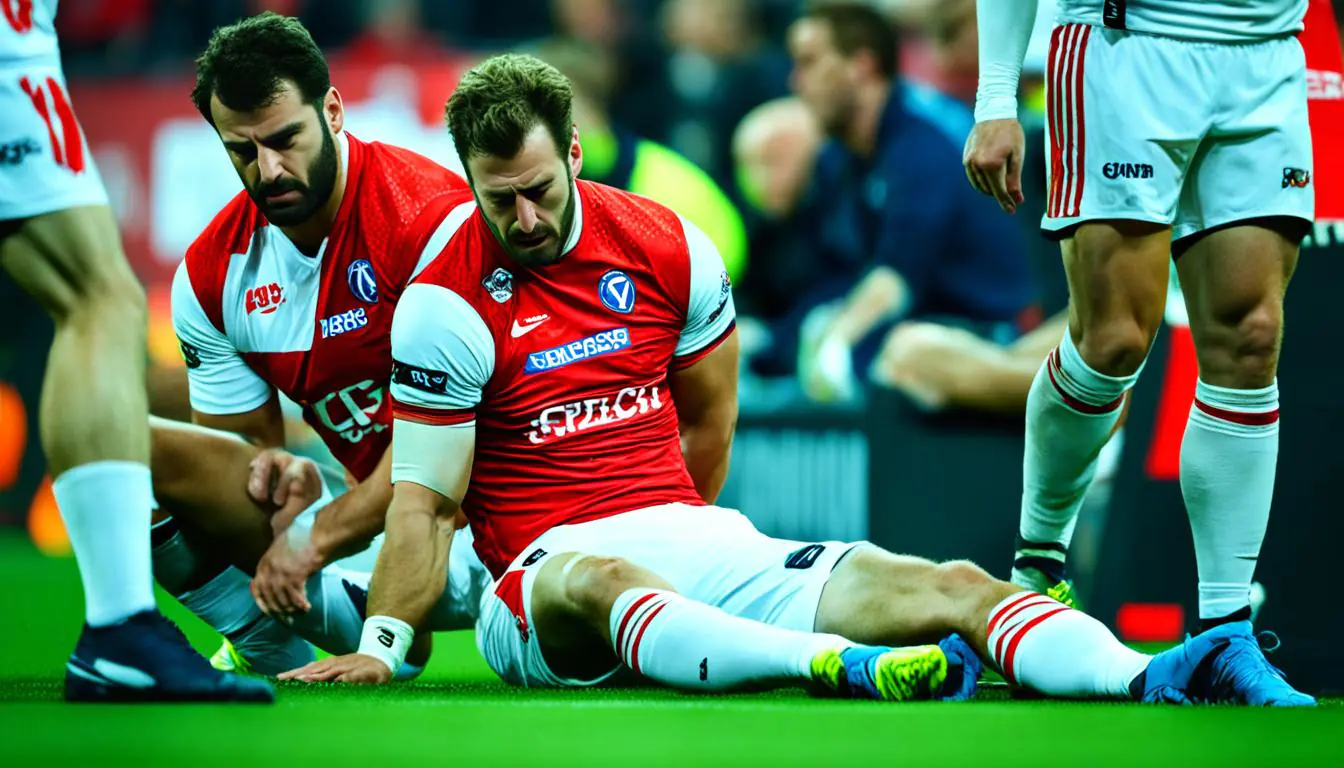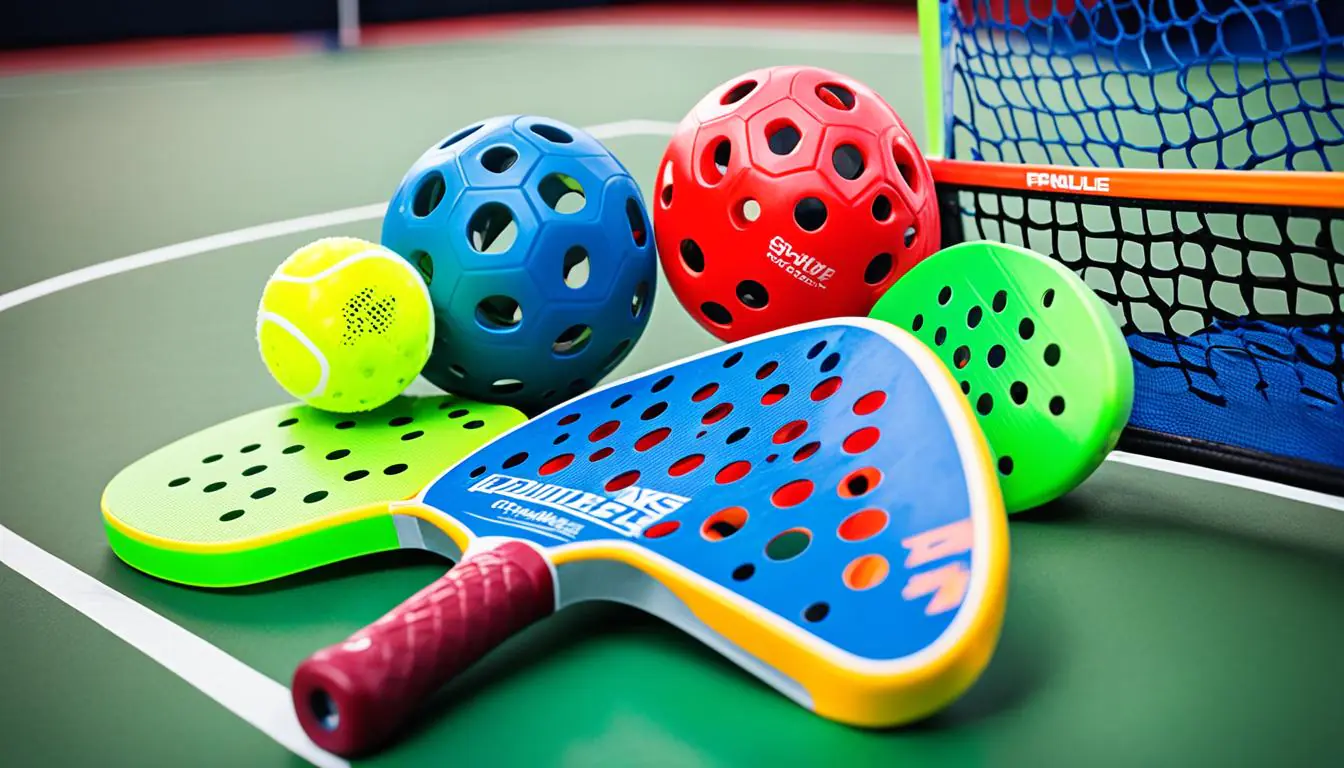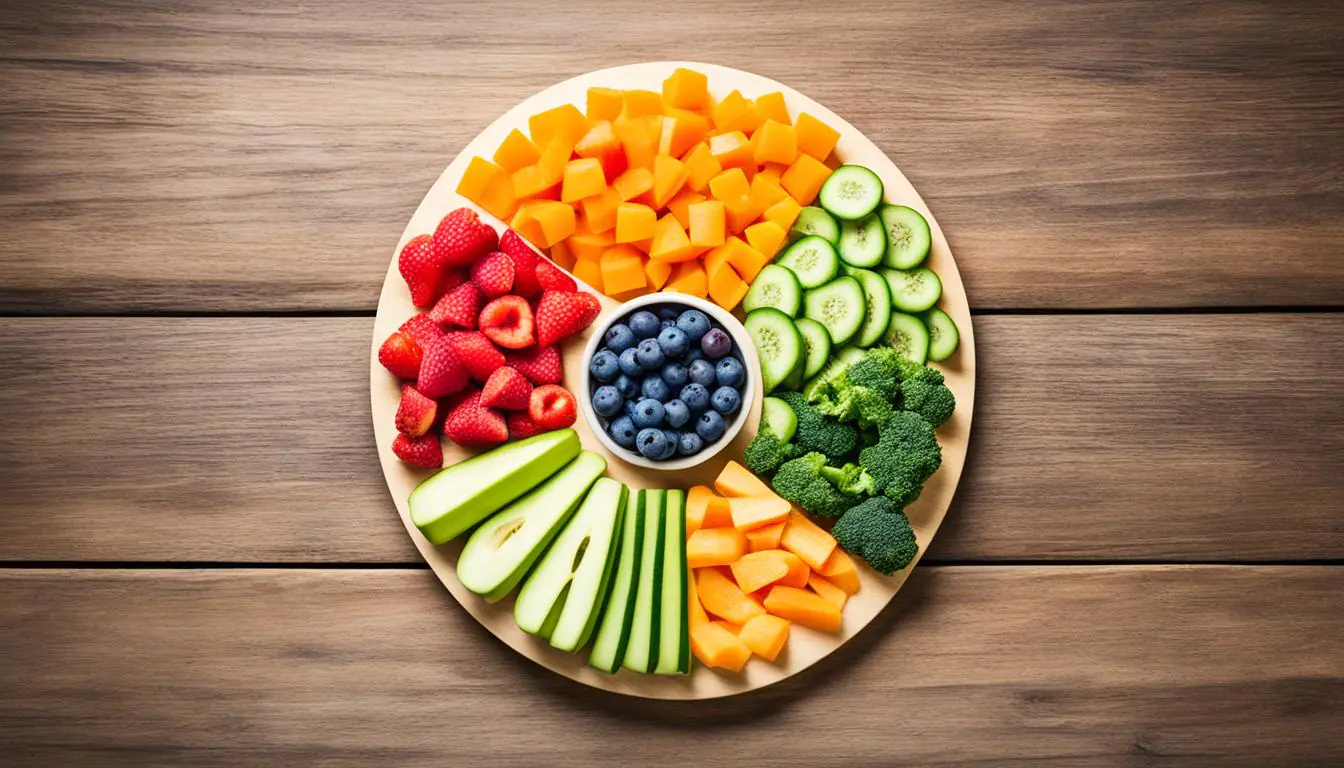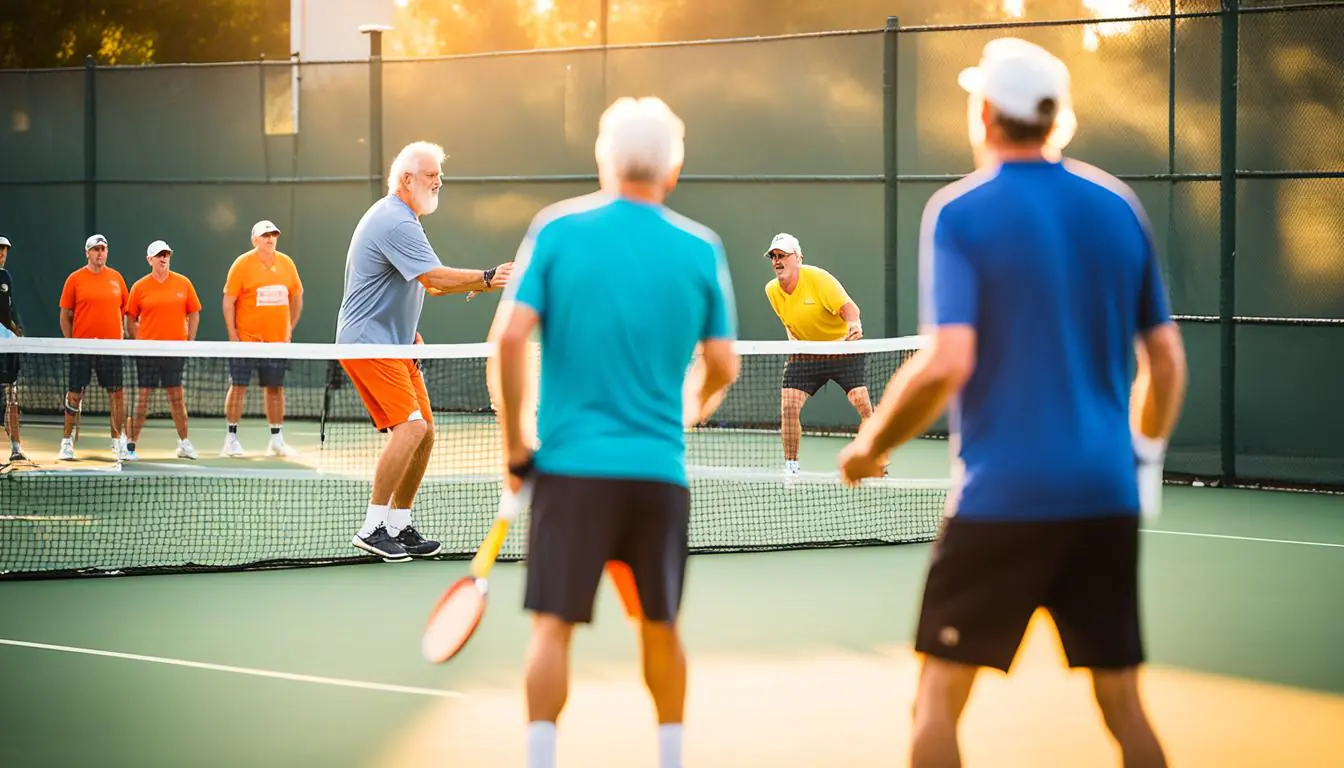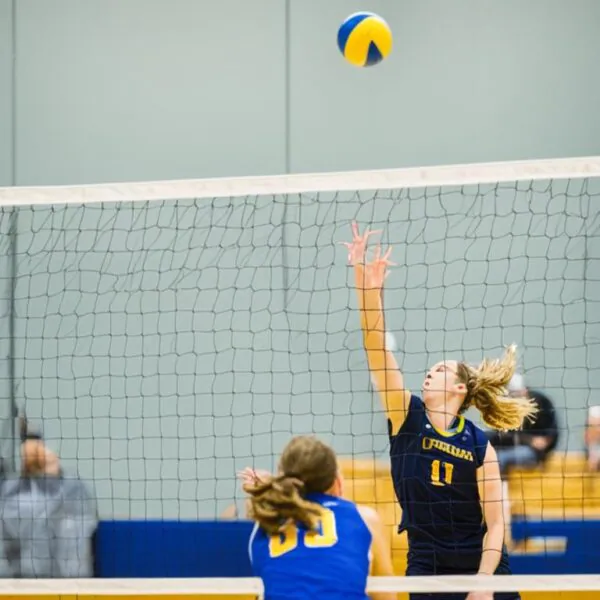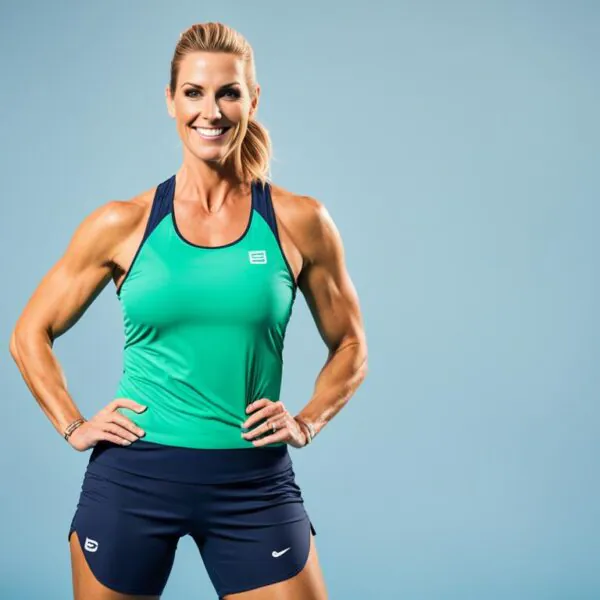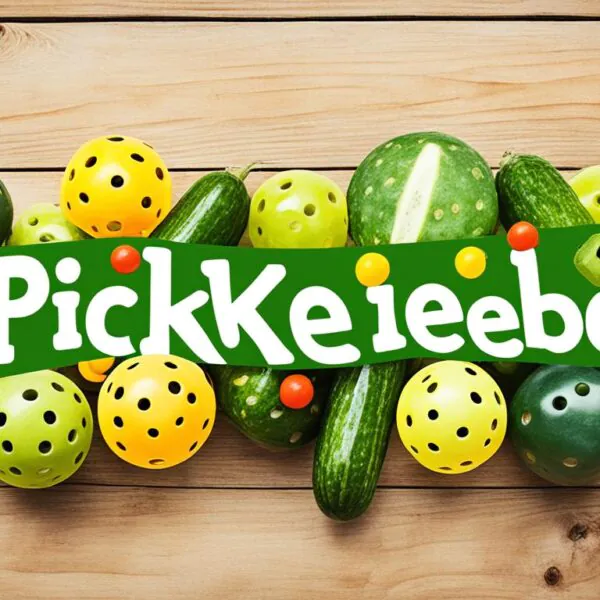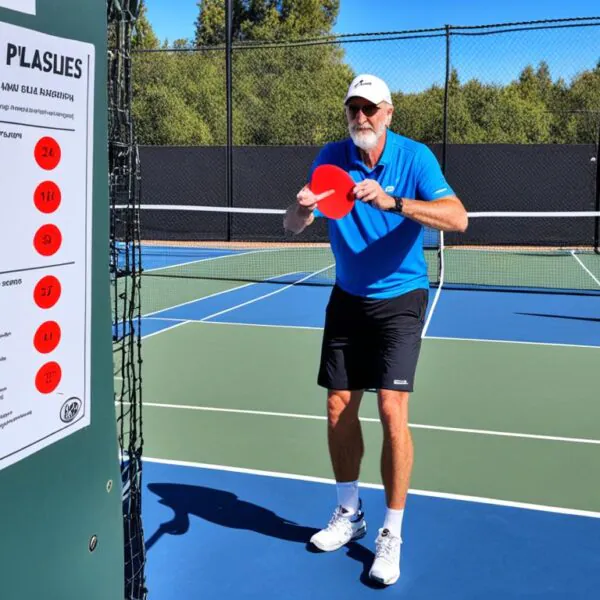Have you joined the millions of Americans playing pickleball during the pandemic? This sport is loved for being easy on the body. But, it’s also causing more injuries, especially for people over 55. We love playing pickleball too, but we know it’s key to play safely.
We’re going to talk about the most common injuries in pickleball. We’ll share ways to prevent them so you can keep playing safely. From shoulder strains and elbow problems to sprains and falls, we’ve got you covered. We’ll give you tips to stay safe on the court.
Key Takeaways
- Pickleball is one of the fastest-growing sports in America, with over 36 million players nationwide.
- Common pickleball injuries include shoulder, elbow, and ankle issues, as well as sprains, falls, and Achilles tendonitis.
- Proper warm-up, stretching, and equipment can significantly reduce the risk of muscle strains, sprains, and other injuries.
- Seeking prompt medical attention for pickleball-related injuries is crucial to prevent long-term complications.
- Staying hydrated and maintaining a healthy lifestyle can lower your chances of sustaining pickleball injuries.
Most Common Pickleball Injuries
Knee Injuries
Pickleball players often get knee injuries like sprains and strains. They can also get meniscal tears. Knee arthritis can flare up too.
To treat these, players use the RICE method and sometimes surgery. It’s important to warm up and stretch before playing. Strengthening the thigh and hip muscles helps prevent injuries.
Hand, Wrist, Elbow, & Shoulder Injuries
Upper body injuries are common in pickleball too. “Pickleball elbow” is one of the main issues. Players can also get wrist injuries from falling. Sometimes, they might break a shoulder or elbow bone.
These injuries often happen when players slip or fall. To avoid them, players should work on balance and core strength. This helps them stay stable on the court.
A study in the Journal of Epidemiology found older players are more likely to need surgery for wrist fractures. Many players have had surgery for upper body injuries from falls.
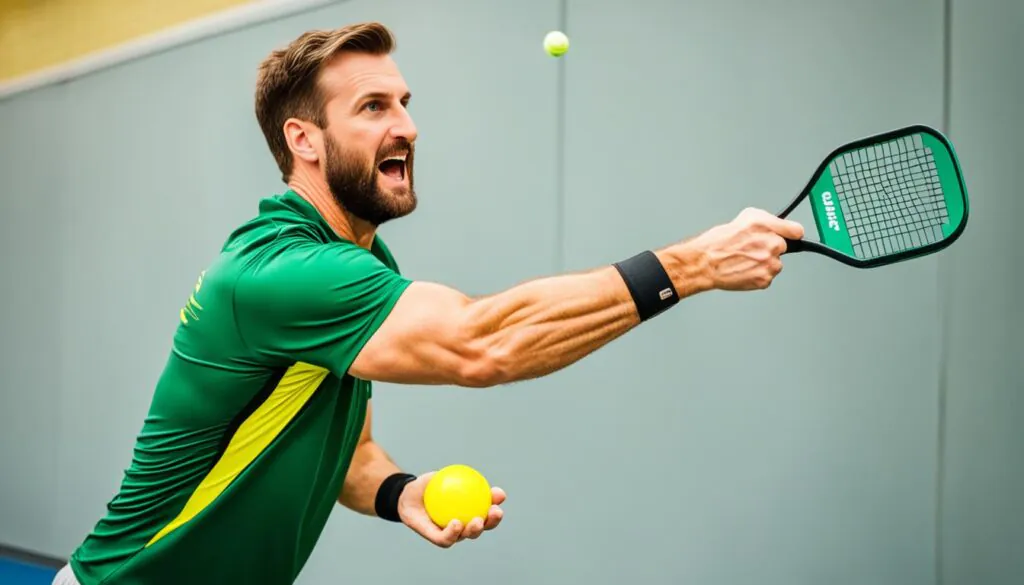
Players can get injuries like broken wrists and elbows from falls. They can also hurt their shoulders or get fractures. Warming up, using the right gear, and building lower body strength can prevent these injuries.
Common Pickleball Injuries and Prevention
Pickleball is a fast-growing sport that’s getting more popular. It’s fun but can be risky, especially for older players. Knowing about common injuries and how to prevent them is key.
Pickleball is safer than other sports like tennis because of its smaller court and underarm serves. This means less stress on the legs and shoulders. But, older players are more likely to get hurt.
Common injuries include strains, sprains, and fractures. Tears, tendinitis, and concussions are also possible. These often happen in the lower body or upper body. They can be from one bad move or from doing the same thing over and over.
“Pickleball elbow” is a common injury from swinging too much. Falling on the hard court can lead to wrist or hip fractures. Rotator cuff injuries are also common from swinging too hard.
To avoid these injuries, follow these tips:
- Warm-up and Stretching: Warm up and stretch your calf, hamstring, and hip muscles before playing.
- Conditioning and Strength Training: Do activities like Tai Chi, biking, or swimming to build strength and stamina.
- Appropriate Footwear: Wear tennis shoes for court sports to prevent ankle sprains and other injuries.
- Safety Gear: Use wrist guards or elbow pads to protect yourself from injuries.
By using these tips, you can play pickleball safely and have fun. Getting ready and protecting your body is key to staying safe and enjoying the game.

Hip Injuries and Arthritis
Pickleball is getting more popular, with players going from 4.8 million in 2021 to 8.9 million in 2023. This growth means we need to talk about common injuries and how they affect players. Hip injuries and making hip arthritis worse are big concerns.
Many pickleball players get muscle strains in their hips. These happen when you move fast, stop suddenly, or change direction quickly. Some players also get labral tears, which are tears in the cartilage around the hip joint. This can make playing hard and hurt.
Playing pickleball can also make hip arthritis worse. This is a big worry for players over 55, who make up most players. The game’s repetitive moves and high impact can make arthritis pain, stiffness, and daily tasks harder.
To help with these issues, rest, anti-inflammatory drugs, physical therapy, and sometimes injections work well. If these don’t help, a hip replacement might be needed to ease pain and improve function.
To stop hip injuries and arthritis, it’s key to strengthen your core, hips, and legs. Also, stretching before and after playing is important. This can make you more stable, flexible, and keep your joints healthy. It also lowers the chance of getting serious hip injuries and arthritis.
| Injury Type | Prevalence | Typical Treatment |
|---|---|---|
| Pickleball Hip Muscle Strains | Common | Rest, anti-inflammatory medication, physical therapy |
| Pickleball Labral Tears | Frequent | Rest, anti-inflammatory medication, physical therapy, sometimes injections |
| Pickleball Hip Arthritis | Increasing | Non-operative management, sometimes hip replacement surgery |
Injury Prevention Strategies
To avoid getting hurt while playing pickleball, follow some important steps. First, know your limits and start slow if you have injuries or arthritis. A good pickleball warm-up routine helps get your body ready.
Using the right shoes and paddles can also help. Learn the right way to play with lessons. And don’t forget to cool down, stretch, eat well, drink water, and take breaks to recover.
Here are some ways to prevent common pickleball injuries:
- Individualized assessment: Work with a pro to make a plan that fits your needs and injuries.
- Customized exercise programs: Work on strengthening muscles, getting more flexible, and improving how you move.
- Technique improvement: Get help on how to play right to lessen strain and play better.
- Warm-up and cool-down: Do a full warm-up and cool-down to cut down on injury risks.
- Education: Learn why using the right safety gear, staying hydrated, and not pushing too hard is key.
- Progressive training: Slowly up the intensity of your workouts to build up safely.
- Monitoring and adjustments: Check on your progress and change your plan as needed.
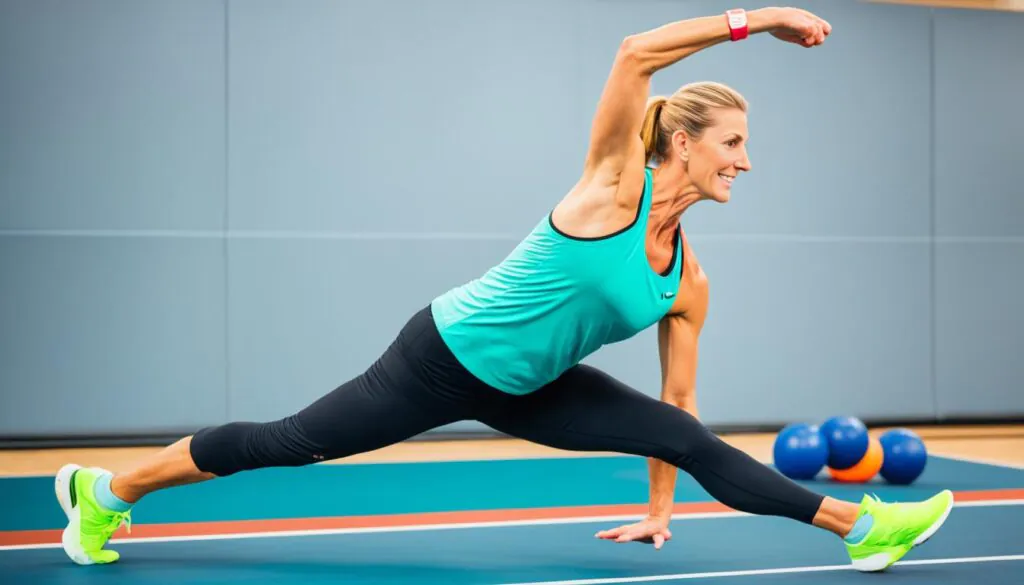
Conclusion
Pickleball is getting more popular, especially with older adults. It’s important to focus on safety and preventing injuries. By knowing the common injuries, like those in the knees, arms, hips, and ankles, we can avoid them.
To prevent injuries, we should know our limits, warm up, use the right gear, keep good form, and rest enough. These steps help us stay safe and have fun playing pickleball. We can enjoy its heart health and social benefits.
With help from physical therapists and a focus on safety, everyone can play pickleball safely. By looking after our health, we can keep playing pickleball for a long time. It lets us enjoy friendly matches and be part of a supportive community.
